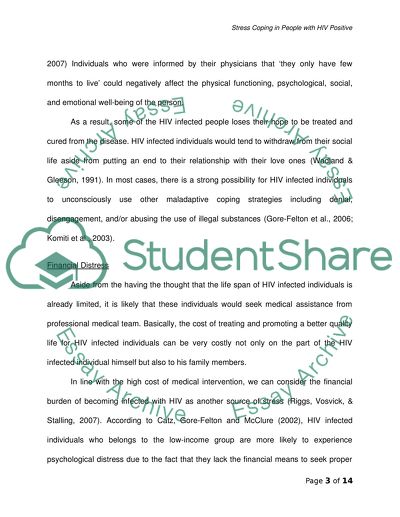Cite this document
(Stress Coping in People with HIV Positive Coursework Example | Topics and Well Written Essays - 2000 words, n.d.)
Stress Coping in People with HIV Positive Coursework Example | Topics and Well Written Essays - 2000 words. https://studentshare.org/psychology/1553860-stress-coping-in-people-with-hiv-positive
Stress Coping in People with HIV Positive Coursework Example | Topics and Well Written Essays - 2000 words. https://studentshare.org/psychology/1553860-stress-coping-in-people-with-hiv-positive
(Stress Coping in People With HIV Positive Coursework Example | Topics and Well Written Essays - 2000 Words)
Stress Coping in People With HIV Positive Coursework Example | Topics and Well Written Essays - 2000 Words. https://studentshare.org/psychology/1553860-stress-coping-in-people-with-hiv-positive.
Stress Coping in People With HIV Positive Coursework Example | Topics and Well Written Essays - 2000 Words. https://studentshare.org/psychology/1553860-stress-coping-in-people-with-hiv-positive.
“Stress Coping in People With HIV Positive Coursework Example | Topics and Well Written Essays - 2000 Words”. https://studentshare.org/psychology/1553860-stress-coping-in-people-with-hiv-positive.


